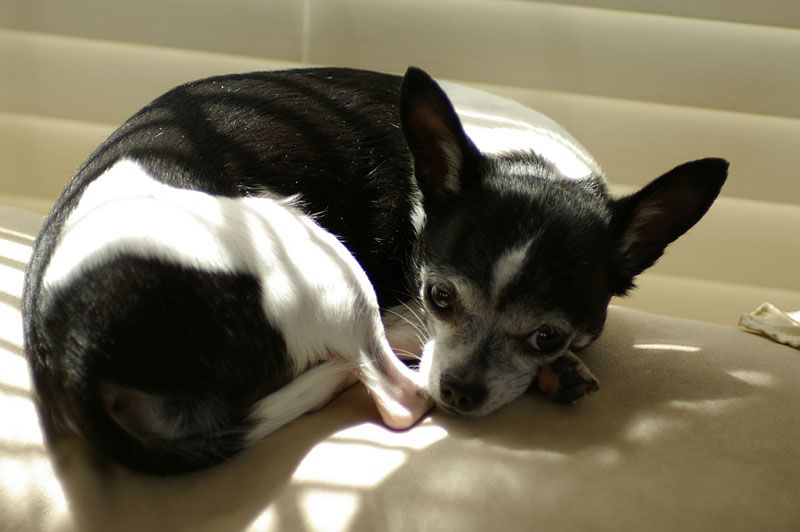Here is the situation that made me want to learn more about metering. I get a lens in the mail and take a test shot of a dog lying in the sun. There's plenty of light to not worry about shutter speed, and not much motion. This is an example of the camera's metering, in this case center-weighted but matrix isn't much different:

The white fur is overexposed, setting off the highlight clipping warning.
When I got a spotmeter, I was able to figure out why this happens. The white fur in the sun is about six stops brighter than the black fur. If you were using the camera's spotmeter, you might see the white fur as reading f2.8, 1/1000 and the black reading f2.8, 1/15 if I count my stops correctly. Since the white fur's pattern doesn't match the model used for center-weighted or matrix metering, the meter can't see this extreme difference, so it typically overexposes by a stop or more. With the extreme range of light to dark, any overexposure blows out the whites.
To correctly meter this scene, you can use your spotmeter to see the range of values between the fur colors. You can't just point the meter at the white fur and use those values, though. The spotmeter would show you an exposure that would make the white fur have the same exposure as 18% gray. That would make the black fur too dark. You need to overexpose the meter reading (adding exposure compensation or altering manual exposure) by 1.5 to 2 stops. That makes the black fur bright enough to show detail.
Ultimately, to get the best exposure without taking a dozen shots of everything, you need to analyze the scene in the viewfinder, notice the bright and dark values, and choose what to keep and what doesn't matter.


 Similar Threads
Similar Threads 



















